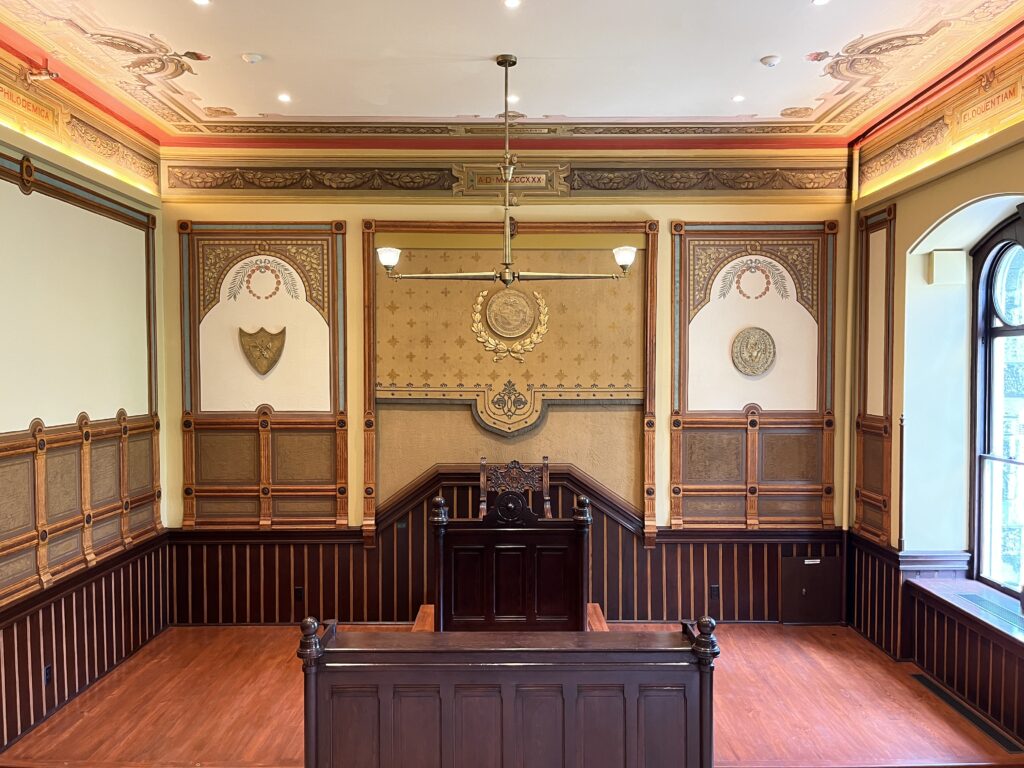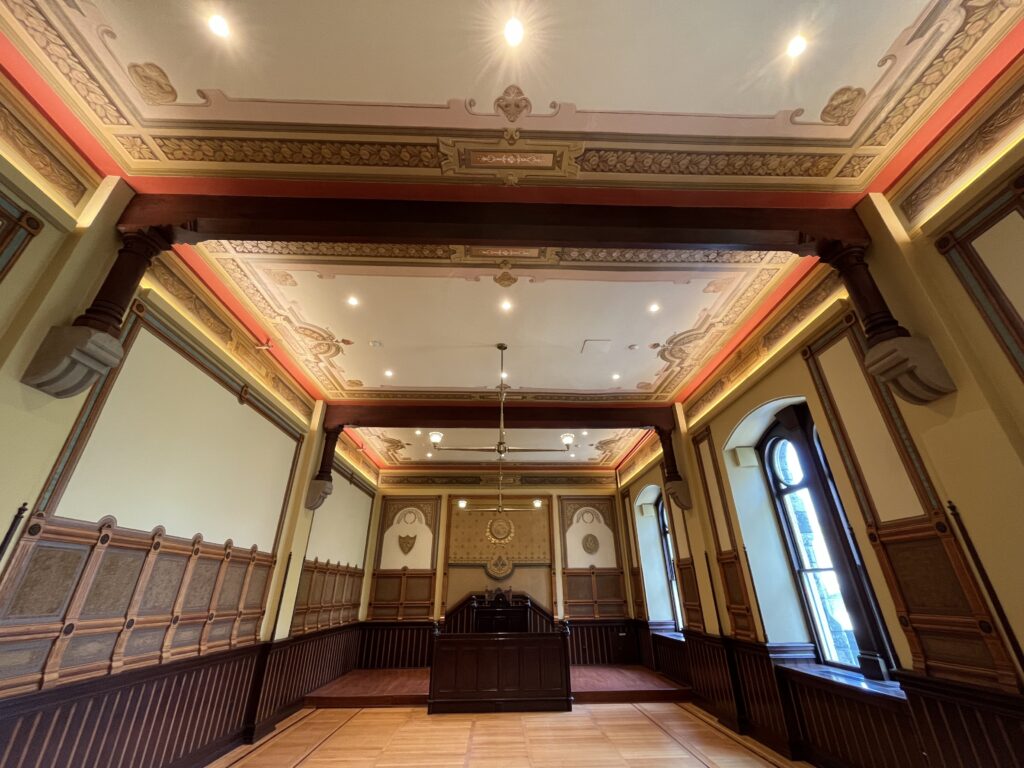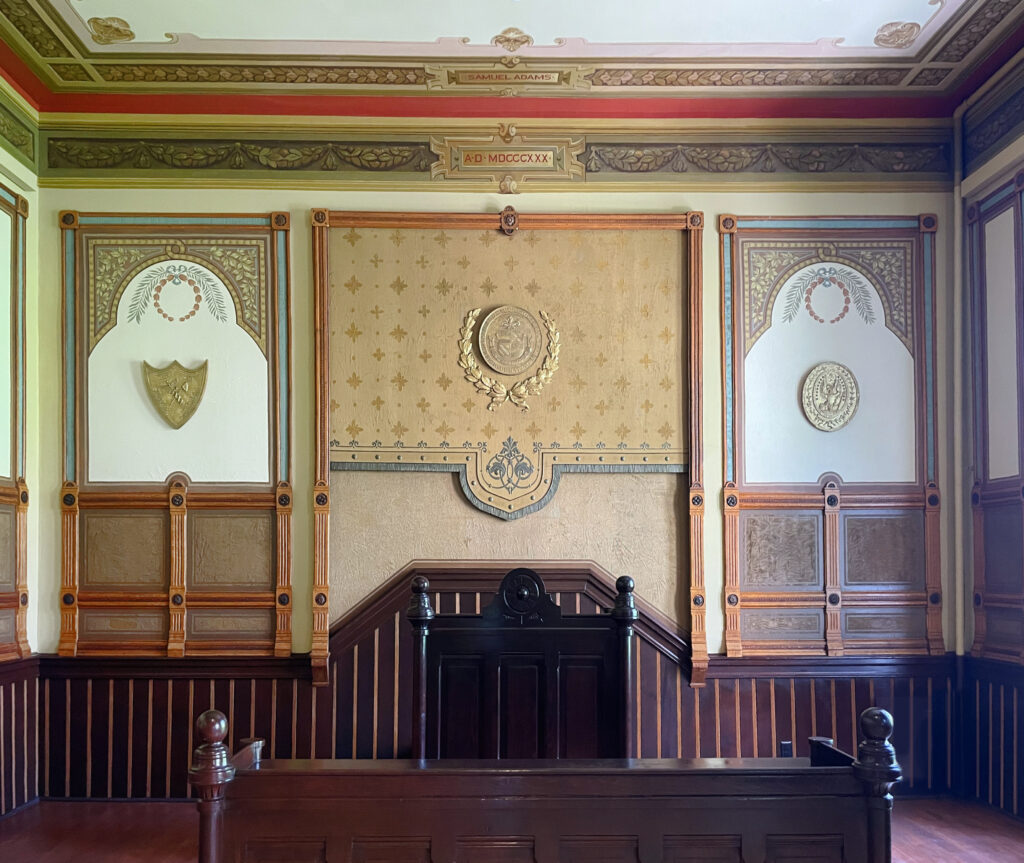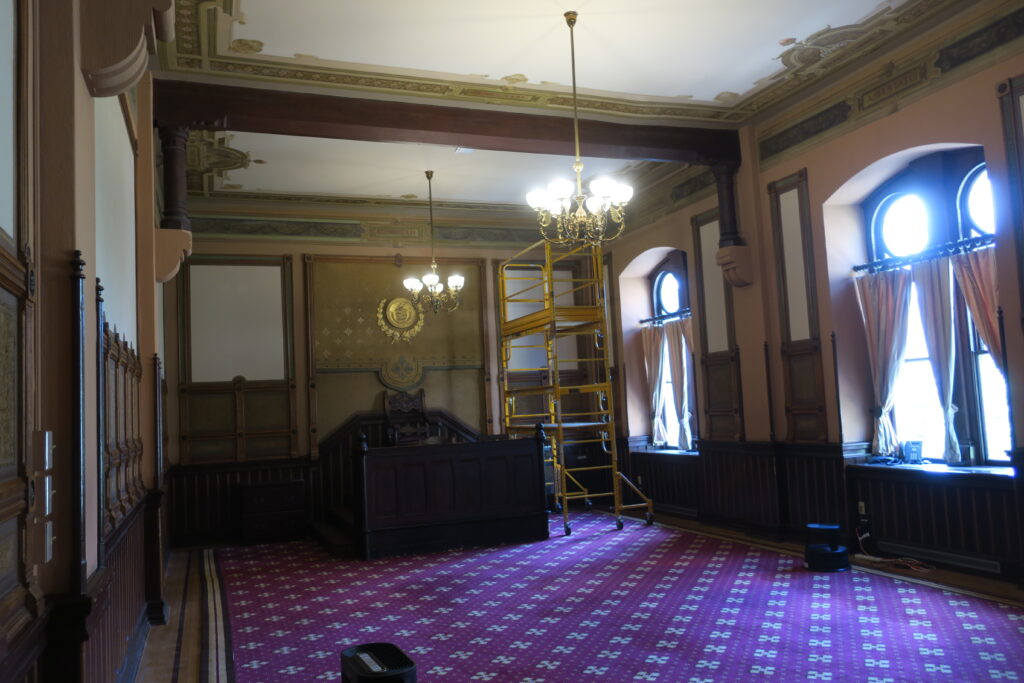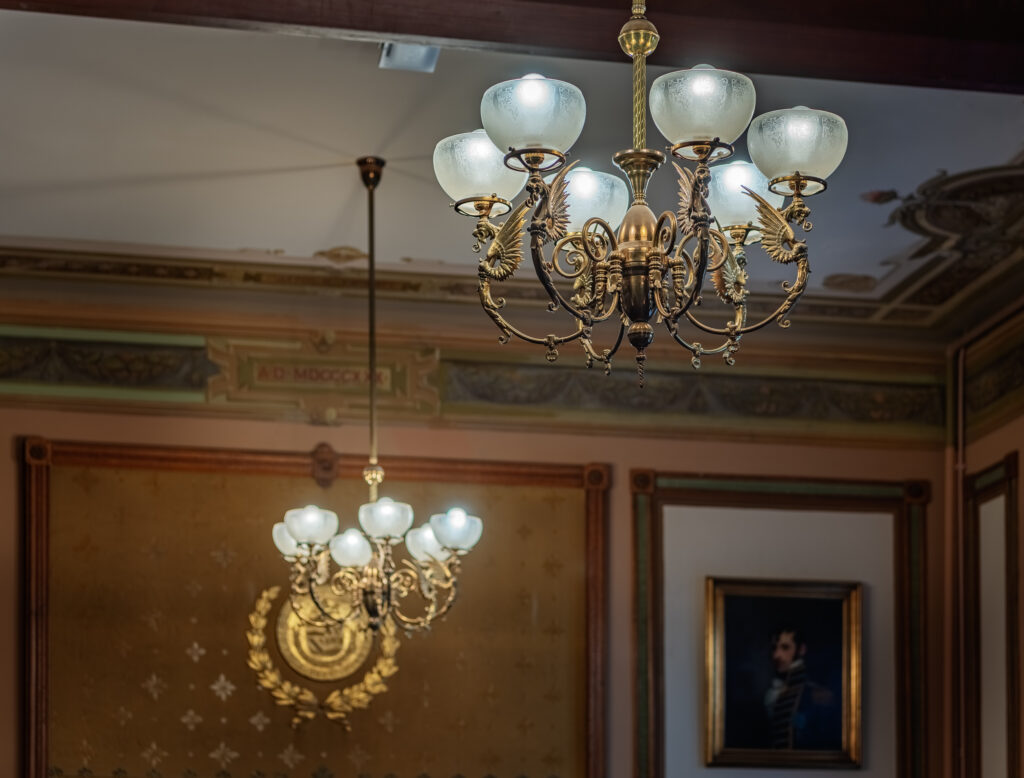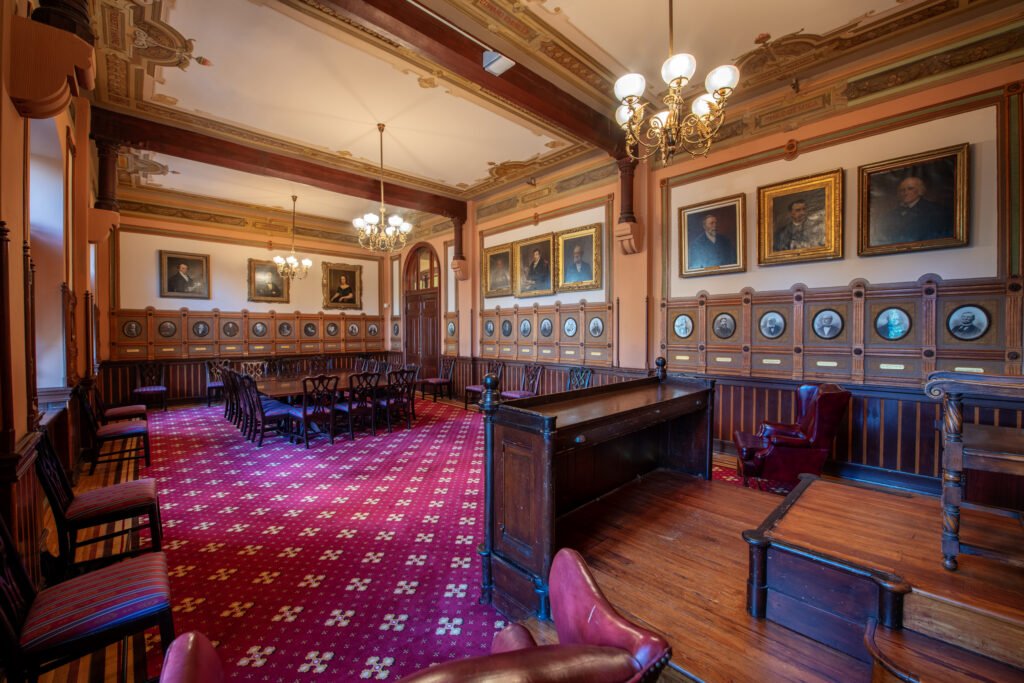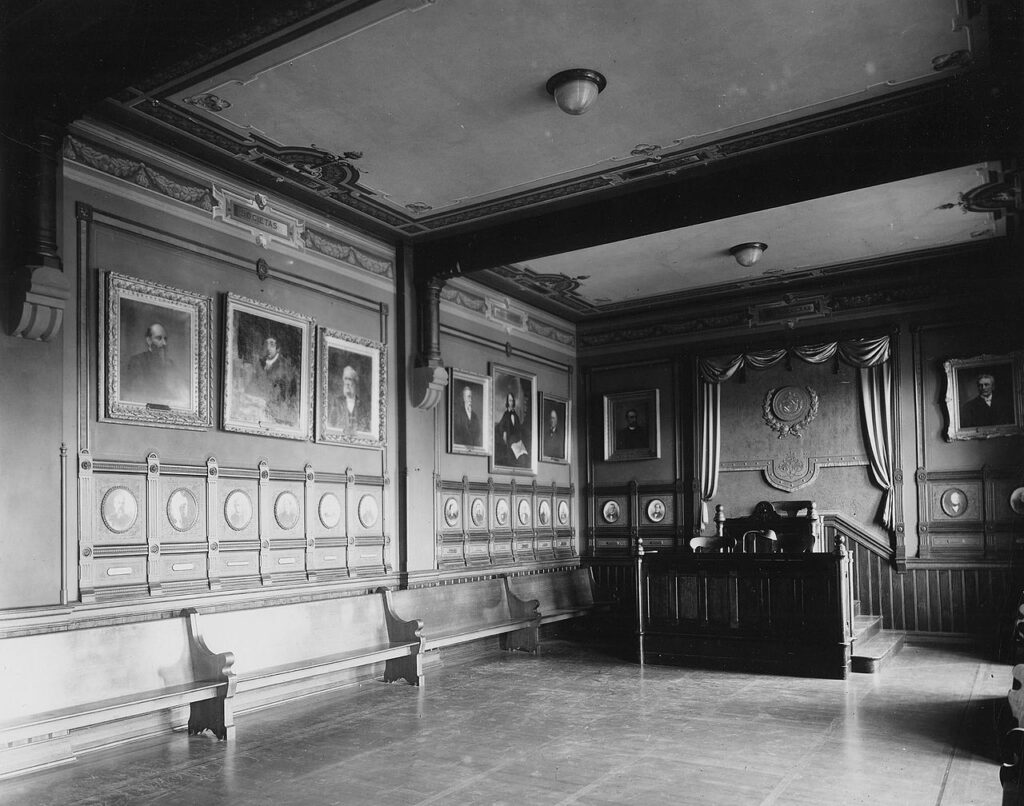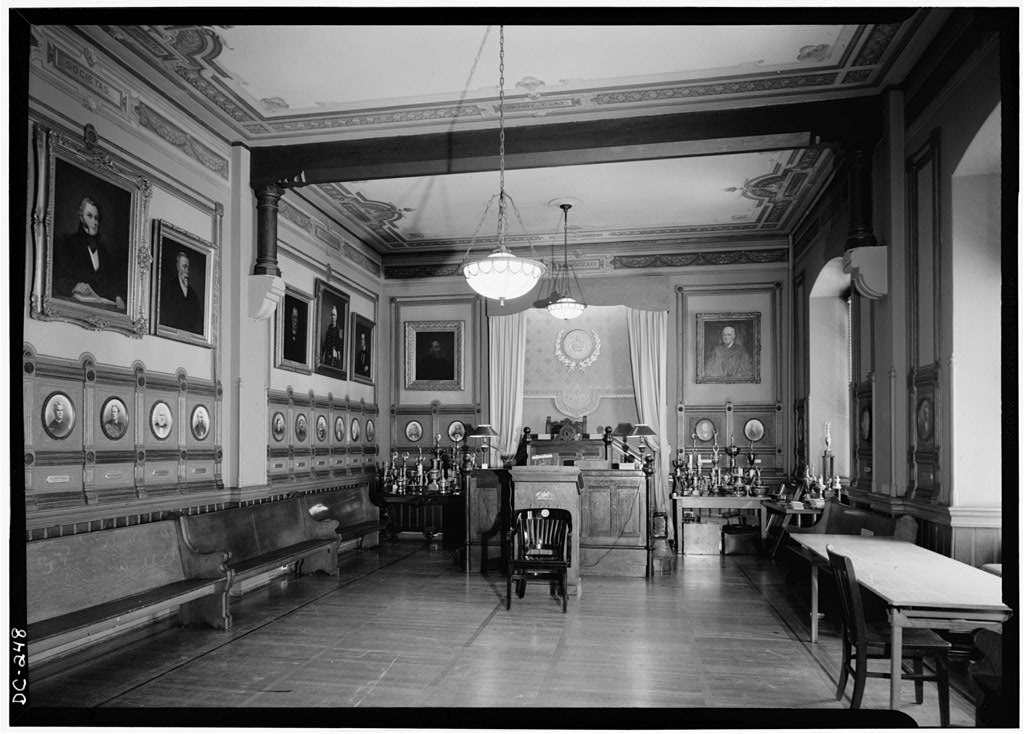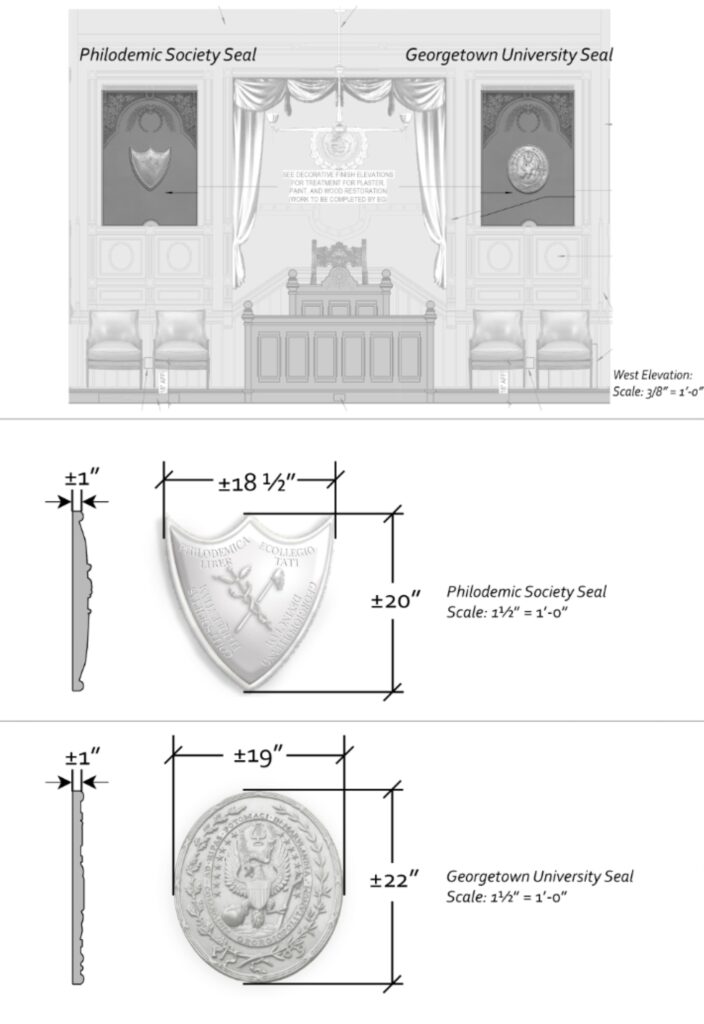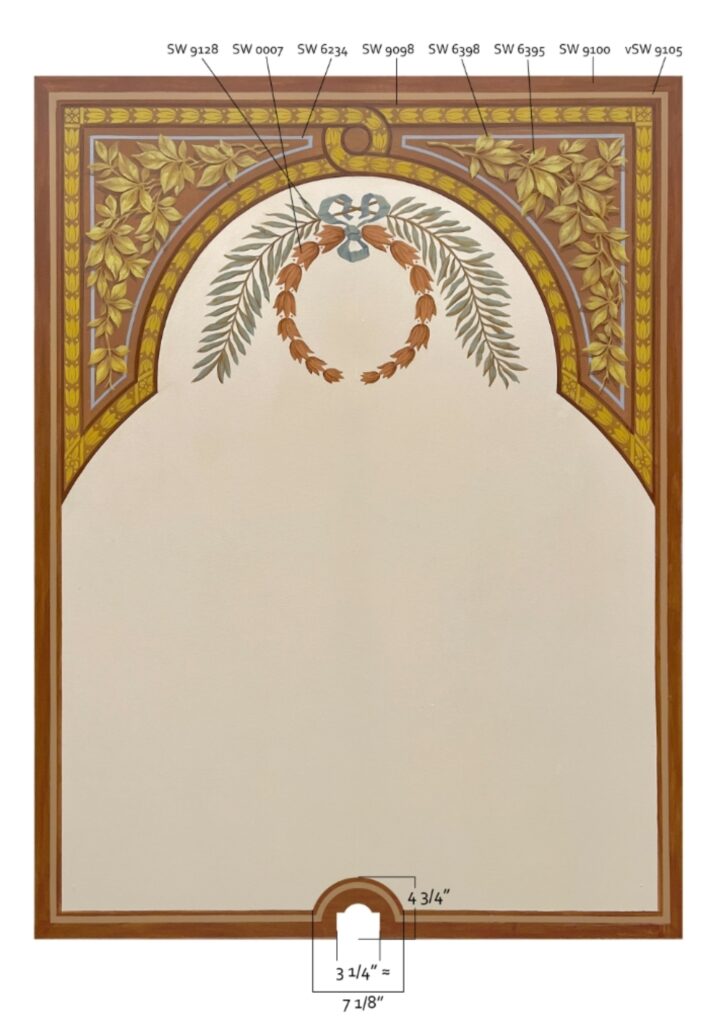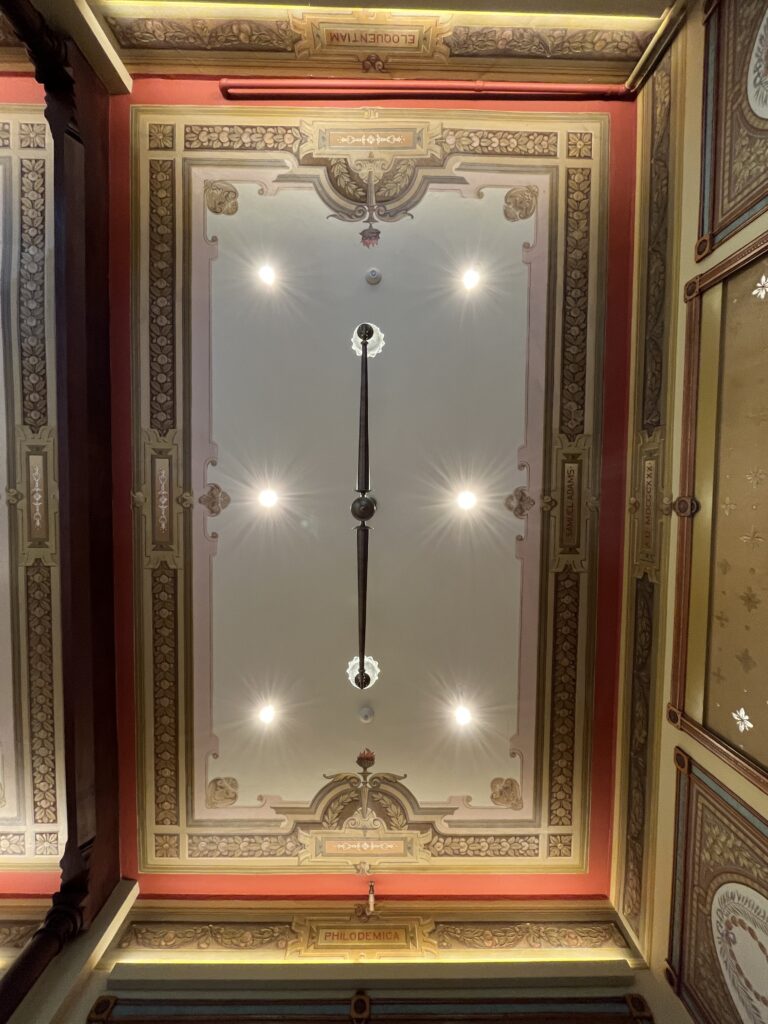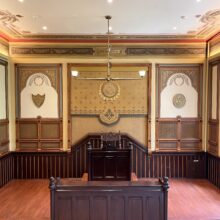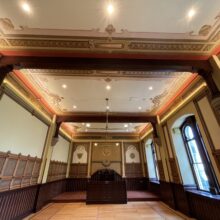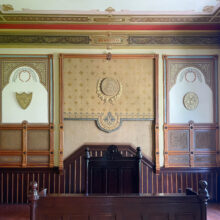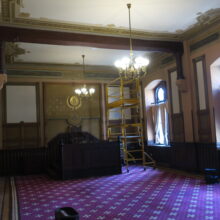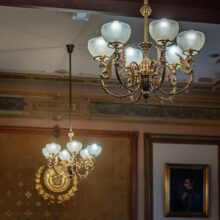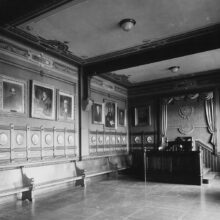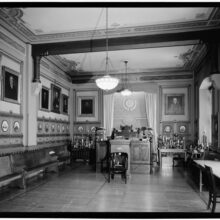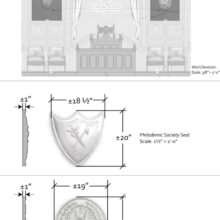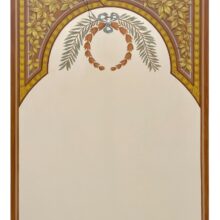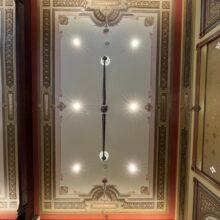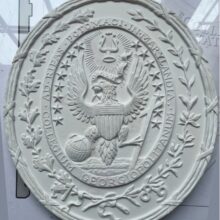Healy Hall - Philodemic Room
The Philodemic Room in Healy Hall is a historic space on Georgetown University’s Hilltop campus in Washington, D.C. It is home to the weekly debates of the Philodemic Society, one of the oldest student debating societies in the United States and the oldest secular student organization at Georgetown.
The overall project goal is to create a welcoming and functional space that can adequately support meetings, events, and other functions by the Philodemic Society and the university community, and is reflective of the values of these communities. Our conservators performed several tasks: survey the plaster, millwork, and stone; evaluate the decorative historic finishes; conserve/restore the original finishes; and design, fabricate, and install new decorative elements in select areas in the space.
Restoration work began in January 2024. All features were treated gently and sensitively using conservation grade methods, including:
- Dry cleaning wood elements and restoring wainscoting.
- Aqueous cleaning plaster and decorative painted elements.
- Repairing or replacing damaged plaster features.
- Applying protective barrier layer to decorative paint to preserve and delineate original finishes.
- Inpainting original decorative painted finishes where missing or damaged.
- Stripping post-historic paint and cleaning of stone elements.
EverGreene collaborated with SmithGroup to make alterations to the painted decorative finishes and create new artwork. Our designers were tasked with creating new artwork within the space. This included two new custom plaster crests (the Philodemic Society Seal and the Georgetown University Seal) to adorn the West Wall; designing and fabrication of ornamental painted panels in the style of Brother Schroen to adorn the West wall behind the new plaster crests; and a new large painting to adorn the East wall.
